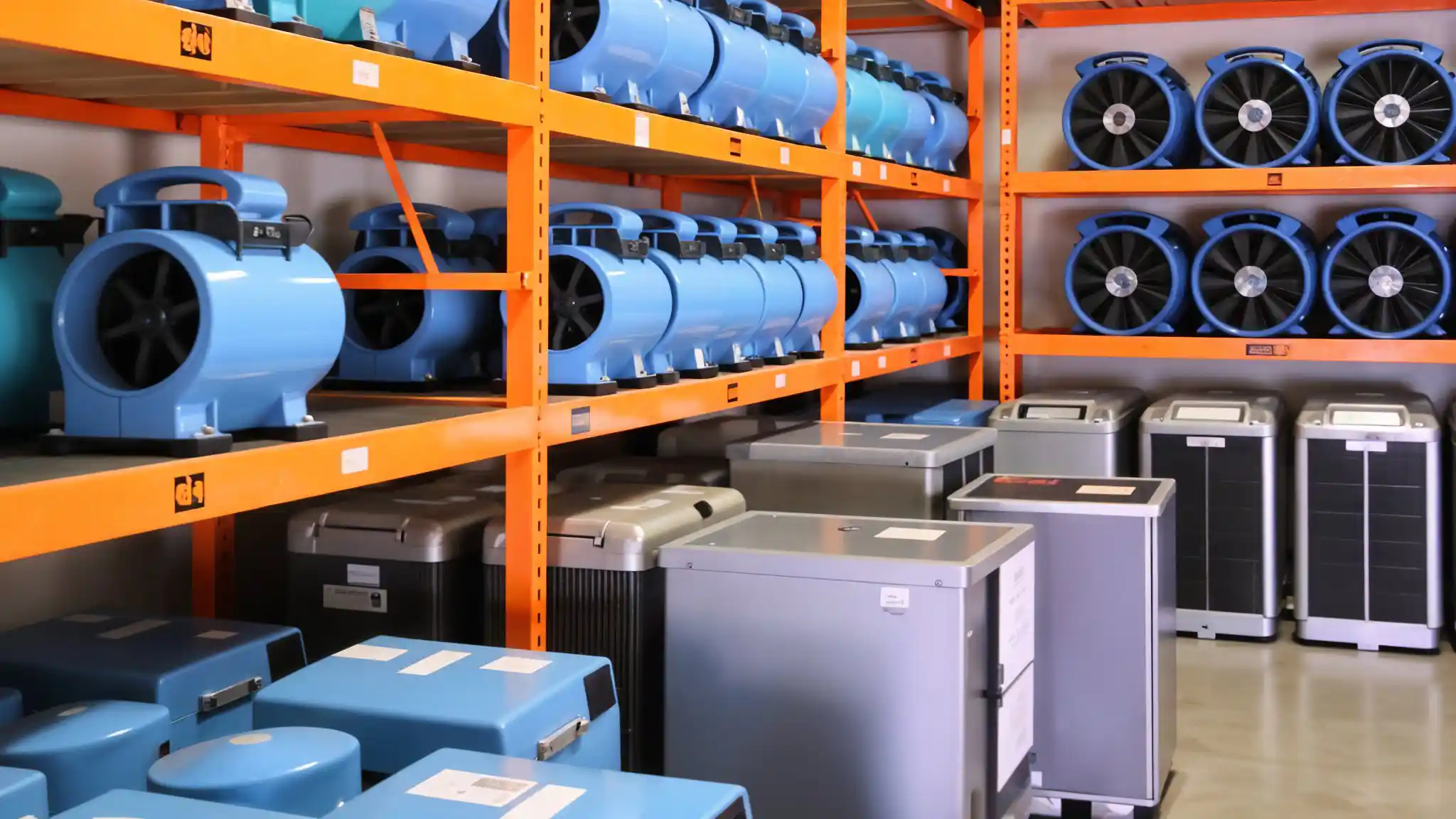A Behind-the-Scenes Look at the Tools We Use for Restoration
When disaster strikes—whether it’s a burst pipe, a fire, or hidden mold growth—homeowners often wonder how restoration companies are able to bring damaged properties back to life. You may imagine big machines humming away or specialized tools you’ve never seen before, but what exactly goes into professional restoration work?
At ServiceMaster Albino, we’ve spent over 35 years helping families and businesses in Waterbury, CT recover from water, fire, and mold damage. While our team’s expertise is vital, the tools and technology we use are equally important. Without the right equipment, restoration would be incomplete, slower, or even unsafe.
Why Tools Matter in Restoration
When people think of restoration, they often picture cleaning supplies and elbow grease. But modern restoration goes far beyond mops and buckets. Professional tools allow us to:
- Work Faster: Specialized equipment speeds up drying, cleaning, and repair.
- Ensure Safety: Tools designed for restoration reduce health risks from mold, smoke, or biohazards.
- Achieve Thorough Results: Industrial-grade equipment penetrates deeper and removes contaminants that DIY methods can’t.
- Minimize Costs: Faster, more effective restoration helps reduce property damage, saving homeowners money in the long run.
Tools for Water Damage Restoration
Water damage is one of the most common emergencies we respond to—whether from floods, burst pipes, or leaks. Water spreads quickly, so we use tools designed to extract water, dry structures, and prevent mold.
1. Moisture Meters & Thermal Imaging Cameras
- Purpose: Detect hidden water inside walls, ceilings, and floors.
- How It Helps: Prevents unseen moisture from leading to mold or structural damage.
2. High-Powered Water Extractors
- Purpose: Remove standing water from carpets, flooring, and upholstery.
- Types: Portable extractors for small areas, truck-mounted extractors for large floods.
3. Industrial-Grade Dehumidifiers
- Purpose: Pull moisture from the air and building materials.
- Why It Matters: Prevents secondary damage like mold growth.
4. Air Movers (Commercial Fans)
- Purpose: Create airflow that speeds up drying.
- How It Works: Directs air across surfaces to evaporate moisture quickly.
Tools for Fire & Smoke Damage Restoration
After a fire, the damage isn’t limited to what you can see. Smoke and soot can travel throughout a home, leaving behind odors and health hazards.
1. HEPA Air Scrubbers
- Purpose: Filter harmful particles from the air.
- Benefit: Improves indoor air quality while removing smoke residue.
2. Ozone Machines & Hydroxyl Generators
- Purpose: Eliminate smoke odors at the molecular level.
- Difference: Ozone is powerful for unoccupied spaces, while hydroxyl generators are safe to use in occupied homes.
3. Soda Blasters & Media Blasters
- Purpose: Gently clean soot and char from surfaces like brick, concrete, or wood.
- Why It’s Better: Less abrasive than sanding or scraping.
4. Specialized Cleaning Agents
- Purpose: Break down sticky soot and smoke residue.
- Use Case: Different solutions are used for walls, fabrics, and electronics.
Tools for Mold Removal & Remediation
Mold can be sneaky. It thrives in dark, damp areas and can spread quickly if not addressed. We use tools that ensure safe, complete remediation.
1. Containment Barriers & Negative Air Machines
- Purpose: Prevent mold spores from spreading to other areas.
- How It Works: Seals off contaminated rooms and uses negative pressure to keep spores in check.
2. HEPA Vacuums
- Purpose: Capture mold spores, dust, and allergens.
- Why It Matters: Standard vacuums can spread spores instead of containing them.
3. Moisture Detection Tools
- Purpose: Identify moisture sources that cause mold.
- Example: Thermal imaging reveals hidden leaks behind walls.
4. Antimicrobial Treatments
- Purpose: Kill mold spores and prevent regrowth.
- Application: Applied after cleaning to ensure long-term protection.
Tools for Carpet Cleaning & Disinfection
As part of our restoration services, we also provide carpet cleaning and COVID-19 disinfection.
Carpet Cleaning Tools
- Hot Water Extraction Machines: Deep clean carpets by injecting hot water and cleaning solution, then extracting dirt and debris.
- Rotary Extractors: Provide extra scrubbing power for stubborn stains.
- Upholstery Cleaning Attachments: Clean sofas, chairs, and other fabric surfaces.
Disinfection Tools
- Electrostatic Sprayers: Apply disinfectant evenly, even on hard-to-reach surfaces.
- Foggers: Disperse disinfectant in fine particles to cover large areas quickly.
- EPA-Approved Cleaning Solutions: Kill bacteria and viruses, including COVID-19.
How Tools + Expertise Work Together
It’s important to note that tools alone don’t solve the problem. It’s the combination of:
- Skilled Technicians who know which tools to use and when.
- Customized Solutions based on the type of damage.
- Industry Standards that ensure safety and effectiveness.
At ServiceMaster Albino, our team is trained and certified to use these tools to their fullest potential.
Why Choose ServiceMaster Albino for Restoration?
- 35+ Years of Experience serving Waterbury, CT.
- Cutting-Edge Tools that deliver faster, safer restoration.
- Certified Professionals trained in water, fire, and mold restoration.
- Customer Care: We guide you through the process with clear communication.
Conclusion
When you call a restoration company, you’re not just hiring people—you’re also relying on their tools, technology, and expertise. From thermal cameras that detect hidden leaks to ozone machines that remove stubborn smoke odors, every tool plays a role in bringing your home back to normal.
At ServiceMaster Albino, we believe in transparency. By understanding the tools we use, you can feel more confident that your property is in capable hands. Whether it’s water damage, fire damage, mold removal, or carpet cleaning, our team is equipped with the right technology to restore your home quickly and thoroughly.
FAQs
Q1. What tools are used for water damage restoration?
Moisture meters, water extractors, air movers, and dehumidifiers are the main tools.
Q2. How do professionals remove smoke odor after a fire?
We use ozone machines, hydroxyl generators, and air scrubbers to neutralize odors.
Q3. Can mold be removed with regular cleaning supplies?
No. Mold remediation requires HEPA vacuums, antimicrobial solutions, and containment systems.
Q4. What’s the difference between air movers and dehumidifiers?
Air movers circulate air to speed up evaporation, while dehumidifiers remove moisture from the air.
Q5. Are the tools safe for families and pets?
Yes. While some tools like ozone generators require temporary evacuation, most are safe when operated by professionals.
Q6. How long does it take to dry out a house after water damage?
With professional tools, drying usually takes 2–5 days, depending on the severity.
Q7. Why can’t I just rent restoration tools myself?
Without proper training, it’s easy to misuse equipment, leading to incomplete restoration or secondary damage.
Q8. Do you use eco-friendly cleaning agents?
Yes. We use EPA-approved, eco-friendly solutions safe for children and pets.
Q9. How do you know if hidden moisture is present?
We use thermal imaging cameras and moisture meters to detect water inside walls and floors.
Q10. What sets ServiceMaster Albino apart from others?
Our 35+ years of experience, advanced tools, and customer-first approach make us the trusted choice for restoration in Waterbury, CT.

